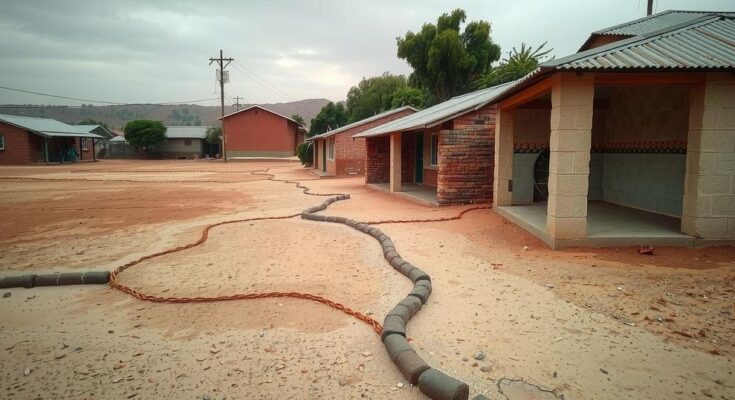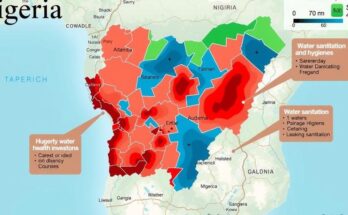Residents of Lima, Peru, face a significant water crisis, with over 635,000 lacking access to running water. Many depend on infrequent deliveries from tanker trucks, which often provide unsanitary water. The average supply falls far short of UN recommendations, highlighting broader issues of poverty and urban planning failures. A stark divide exists between affluent neighborhoods and poorer communities, exacerbating inequalities in access to essential resources.
In the arid hills surrounding Lima, Peru’s bustling capital of over 10 million inhabitants, many residents face the stark reality of living without running water. These individuals rely on water tankers to deliver their scant supply. Despite being surrounded by the Pacific Ocean, the Andes Mountains, and multiple rivers, Lima’s rain is infrequent, contributing to a severe water crisis.
According to the National Institute of Statistics and Computer Science, over 635,000 residents in Lima lack access to running water, predominantly in informal settlements situated atop the city. These communities are often isolated from the city’s water and sewer services, depending on blue tanker trucks that offer water infrequently, sometimes only once a week.
Many water delivery containers are unsanitary, as Catalina Naupa, a resident of San Juan de Miraflores, notes, “We get stomach cramps and migraines. There are worms in the bottom of the tank.” During winter months, the delivery trucks are occasionally unable to navigate muddy roads, forcing residents to severely limit their water use, often washing clothing only every week or two.
Nicolas Reyes from Sedapal, the local water utility, states that each family receives one cubic meter (approximately 260 gallons) of water weekly. This equates to around 30 liters (eight gallons) per person per day, significantly less than the recommended 50-100 liters per day as per United Nations guidelines.
Jeremy Robert, an expert from the Institute for Development Research, highlights concerns regarding potential future water rationing as the rainy season approaches. Antonio Ioris, a geography professor at Cardiff University, warns that climate change may further exacerbate water scarcity in the region yet emphasizes that systemic neglect of poor residents’ access to water is a root issue.
Urban planning failures and rural poverty migrations contribute to these dire circumstances. Many areas within San Juan de Miraflores feature steep dirt roads and staircases that hinder access for water delivery trucks. Consequently, these communities suffer financially, often paying up to six times the cost for water compared to those connected to the formal utility network.
One striking symbol of disparity is a concrete barrier dubbed the “wall of shame,” which segregates poorer districts from affluent neighborhoods like Santiago de Surco, where water consumption is over 200 liters per day per person. Cristel Mejia, who leads a soup kitchen in the disadvantaged area, observes, “Surco seems like another world,” vividly capturing the stark contrast between these two parts of Lima.
The lack of running water in Lima underscores a complex interplay of climate change impacts and systemic failures in urban planning that significantly affect the city’s poorer communities. With limited access to clean supply and no immediate relief in sight, the challenges faced by these residents are not only a matter of resource scarcity but also a pressing social justice issue that demands urgent attention from policymakers.
Original Source: homenewshere.com




